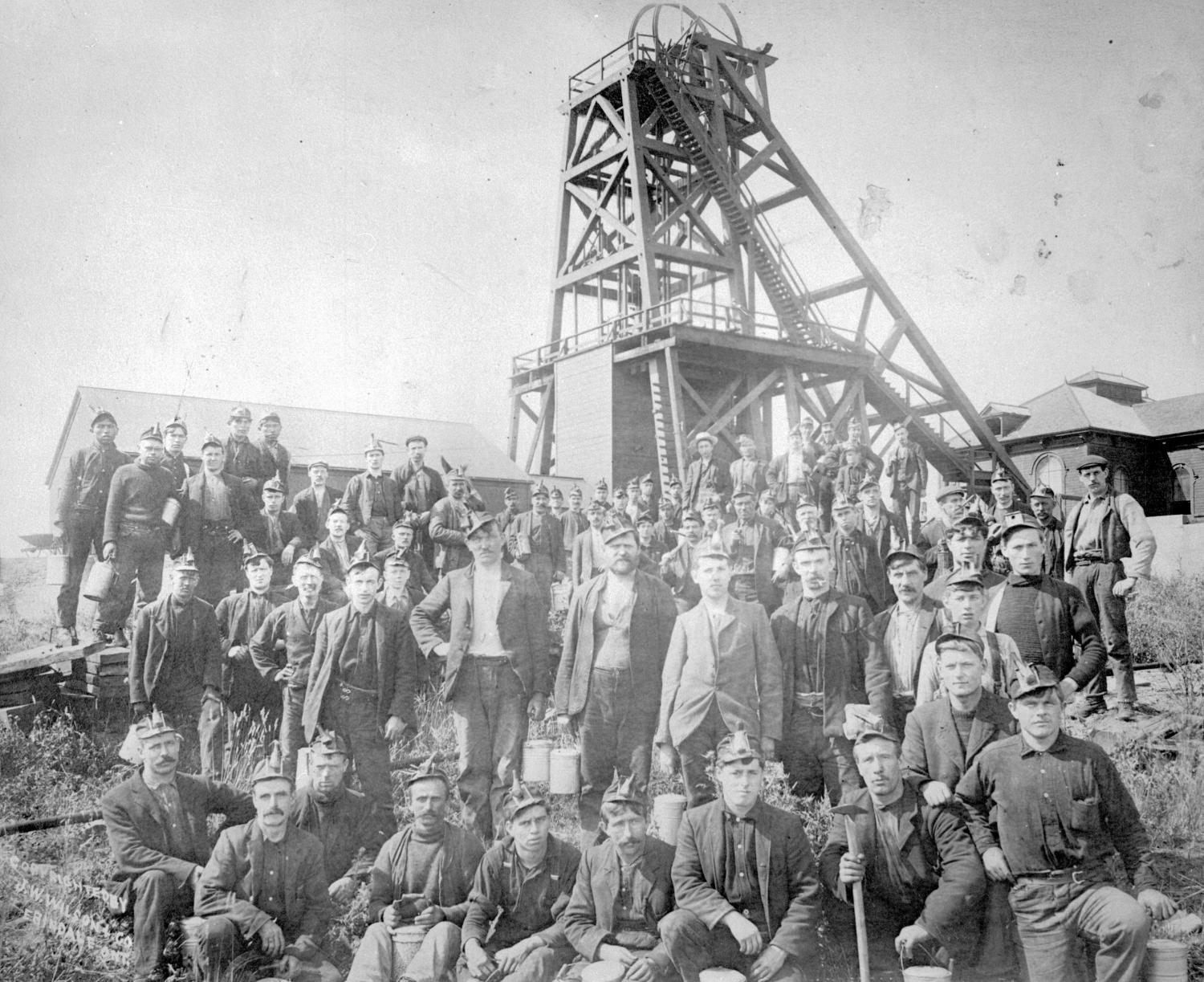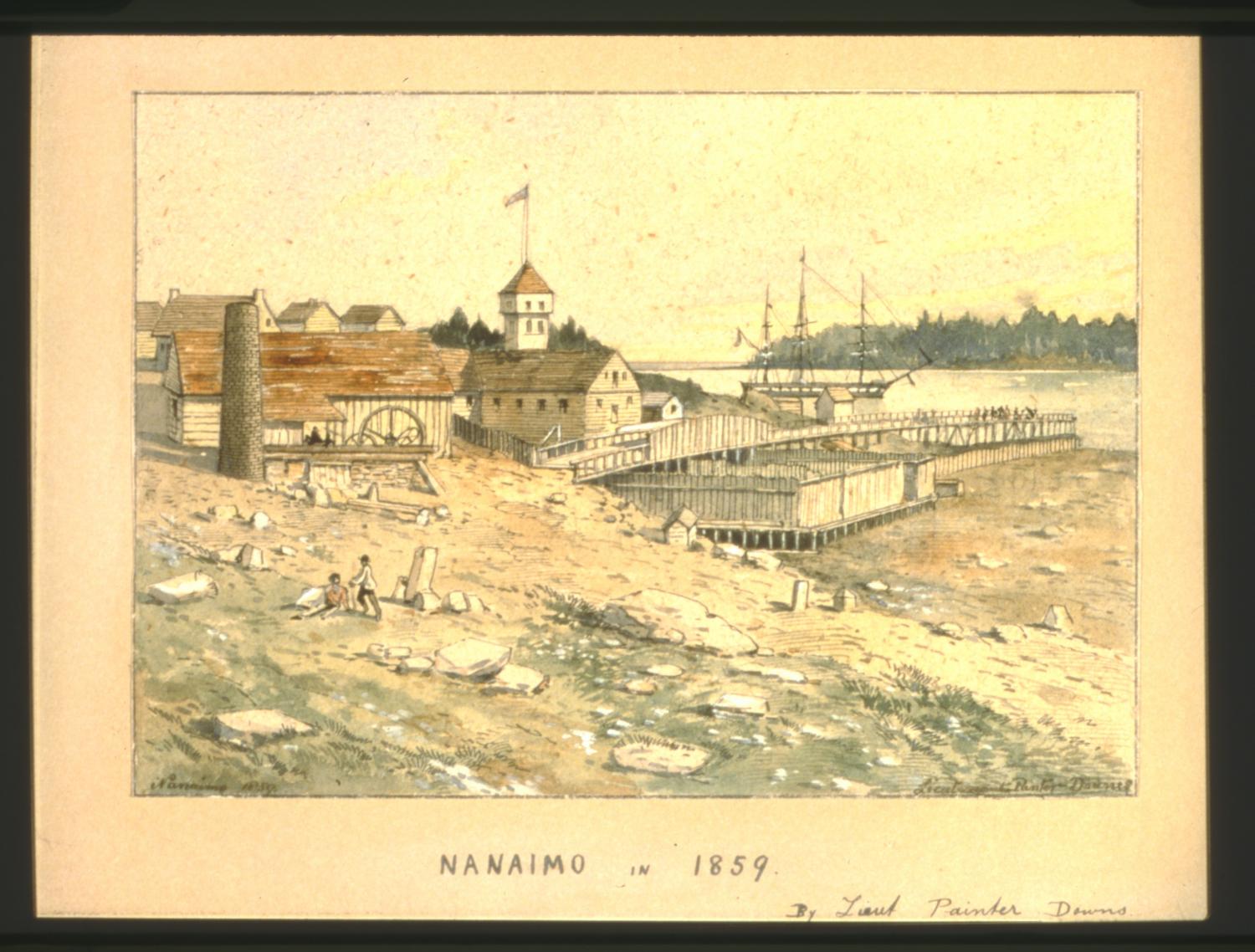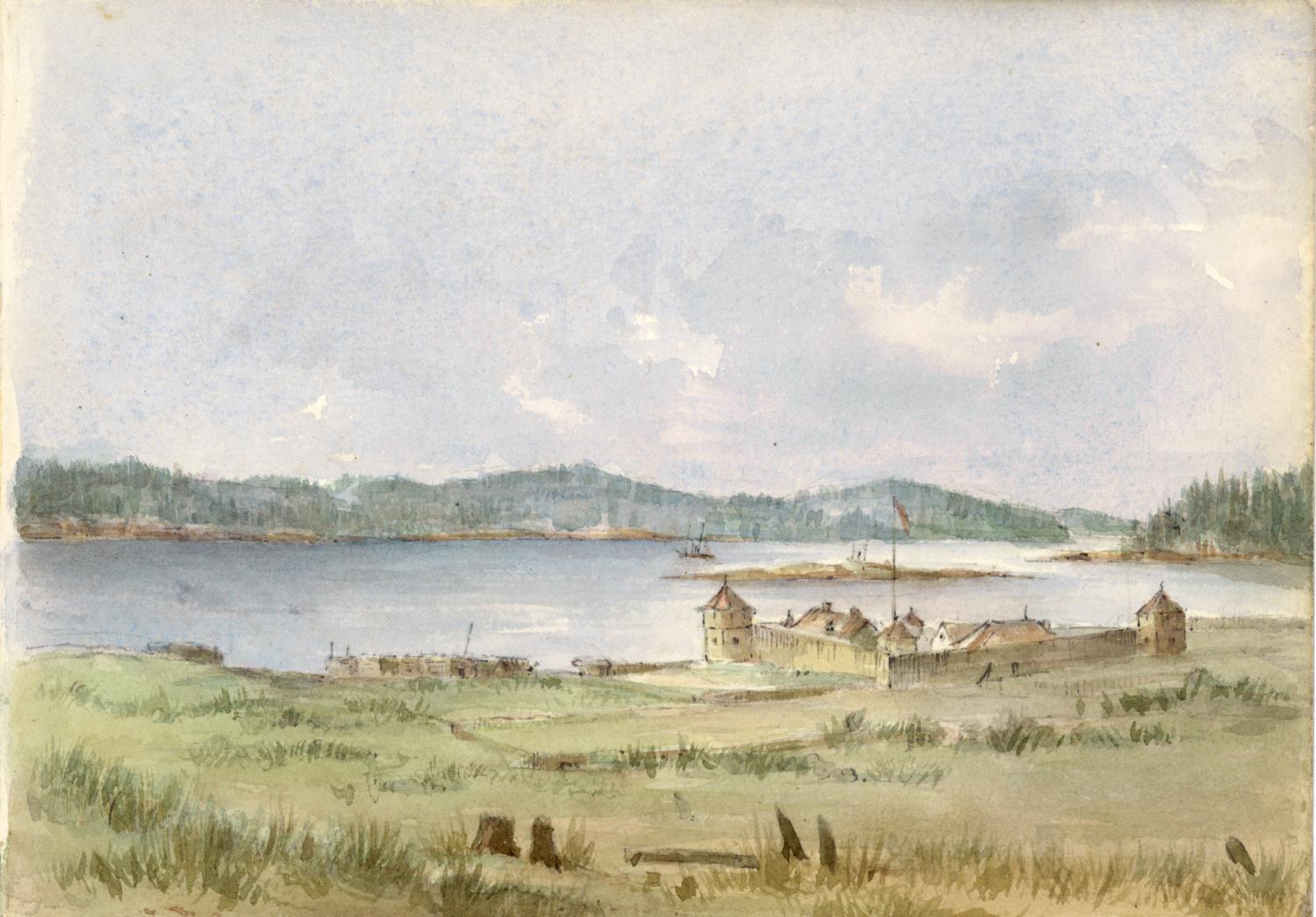Scottish Miners Arrive
B.C.'s raucous history of labour strikes begins at the northern tip of Vancouver Island
Date: 1850
In 1835 — more than a decade before gold was discovered on the Fraser River — another resource in the northern part of Vancouver Island would grab the attention of white settlers: coal.
The local Kwakwaka’wakw people were the first to mine the area, which lay in their traditional territory. They informed the Hudson Bay Company (HBC) of the coal’s presence, offering to sell what they dug up.
The veins of coal soon attracted international attention. In 1848, a squadron of Scottish miners from Lanarkshire was the first of what would be a fifty-year-long influx of professional miners from Scotland and England. They worked alongside the Kwakwaka’wakw miners. Recruited by agents who negotiated contracts and lured by advertisements and anecdotes, in 1849, the newcomers built Fort Rupert, located near present-day Port Hardy. Construction of the fort enlisted help from a variety of groups; Scottish miners worked next to French-Canadian and Métis HBC employees, as well as Hawaiians, Russians, and over 1,200 Kwak’wala speakers.
One Scot who arrived in 1851 was a man named Robert Dunsmuir. He would go on to make a fortune for himself, establishing mining settlements in Wellington and the Comox Valley on Vancouver Island. His mines, though, would become notorious for poor working conditions, inciting impassioned strikes against him.
Frustrated workers weren’t unique to Dunsmuir’s mines, however. Early miners found the promises of high wages were unsubstantiated. In 1850, just a year after the founding of Fort Rupert, the Scottish miners would strike against the HBC, demanding better remuneration. Coupled with resistance from the Kwagu’ł, a Kwakwaka’wakw tribe, who insisted on their ownership of the mines, the endeavour at Fort Rupert was deemed a failure. Attention shifted south towards Fort Nanaimo, where Vancouver Island Governor James Douglas negotiated a treaty with the Snuneymuxw First Nation in 1854. It gave European settlers access to the mines there while acknowledging the Snuneymuxw way of life and protecting their traditional fisheries and hunting grounds.
Often accompanied by their families, the British miners who arrived at Fort Rupert and Fort Nanaimo laid the groundwork for the region’s white-settler society. Their organization as labourers would lead to a culture of working-class activism. But their organizing would also later be used against Asian miners, foreshadowing racial tension to come.
Sources:
- All Points West. “Last Working Coal Mine on Vancouver Island Shuts down, Marking End of Era.” CBC, CBC News, 17-01-16, www.cbc.ca/news/canada/british-columbia/last-working-coal-mine-on-vancouver-island-shuts-down-marking-end-of-era-1.3407339.
- Belshaw, John. “The Standard of Living of British Miners on Vancouver Island, 1848-1900 | BC Studies: The British Columbian Quarterly.” BC Studies, 1989, ojs.library.ubc.ca/index.php/bcstudies/article/view/1335.
- Belshaw, John Douglas. “The Island Colony.” BC Campus, 13 Apr. 2015, opentextbc.ca/preconfederation/chapter/13-8-the-island-colony/ancouver-island-shuts-down-marking-end-of-era-1.3407339.
- Kay, Maclean. “Fort Rupert and the Forgotten Coalfields of Suquash.” The Orca, 15 Mar. 2019, theorca.ca/resident-pod/fort-rupert-and-the-forgotten-coalfields-of-suquash.
- Marshall, Daniel. “Fort Rupert and the Mystery of the Fort Victoria Treaties.” The Orca, 18 Oct. 2019, theorca.ca/resident-pod/fort-rupert-and-the-mystery-of-the-fort-victoria-treaties.
- Mickleburgh, Rod. On the Line: A History of the British Columbia Labour Movement. Harbour Publishing, 2018.






